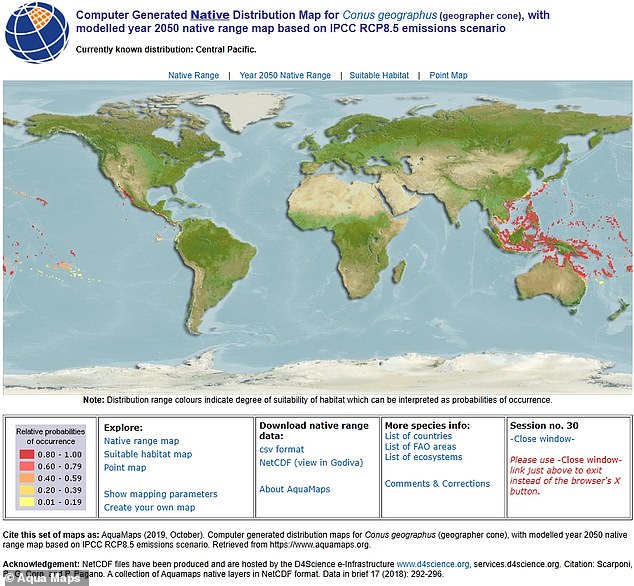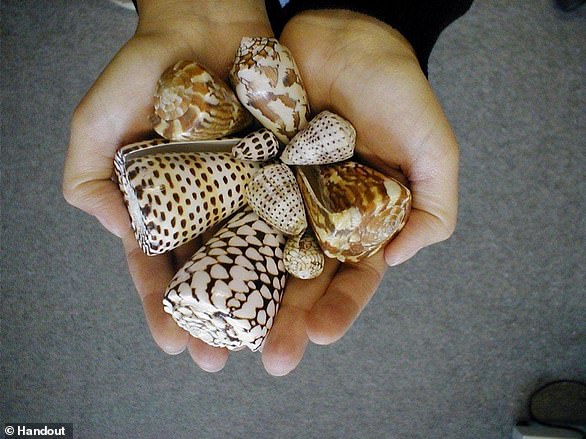With the summer holidays approaching, many will be looking forward to going abroad.
But you should be careful when picking up shells on the beach, as it could leave you minutes from death.
A video, shared by TikToker Beckylee Rawls, shows her walking along a beach in Okinawa in Japan when she picks up a pretty shell.
She shows it to the camera before putting it back into the sea – and it was only later that she realised her mistake.
In another video she holds up a similar shell, saying: ‘Yep, that was me picking up a marbled cone snail – one of the deadliest creatures on Earth. Had no idea.’
She explained: ‘I was out tidepooling in Okinawa, Japan, and I came across this shell.
‘As you can see, it’s one of my favourite shells to collect because the pattern is so stunning.
‘So I pick up the shell and that’s when I noticed the shell’s alive, and the black and white tube you see is the snail’s siphon which it breathes out of.

The video, shared by TikToker Beckylee Rawls, shows her walking along a beach in Okinawa in Japan when she picks up a pretty shell

‘I was playing with the most venomous creature in the ocean,’ Beckylee said, ‘that can lead to full paralysis or fatality’
‘This is also the end of the snail that shoots a harpoon to sting and inject its victims with venom.’
She said it was only after Googling the shell that she realised her mistake.
‘I was playing with the most venomous creature in the ocean that can lead to full paralysis or fatality,’ she said,
She explained that the species is allegedly nicknamed the ‘cigarette snail’, because ‘you have just enough time after it stings you to light a cigarette before you pass’.
‘I hope my story spreads awareness that not all pretty shells are harmless,’ she added.
She also makes it clear in the comments section of the video – which has nearly racked up 30 million views – that the shells she has at home are ones that she found empty and washed up on the beach.
There are around 700 species of cone snails, all of which are highly venomous. They can be found in the South China Sea, the Pacific Ocean and the waters around Australia.
These delicate but deadly snails have a large variety of patterns on their shells, which can prompt people to pick them up.

Cone snails, like this one pictured, bear striking patterns on their shell. However, they are among the most venomous creatures on Earth

Cone snails use their ‘siphon’ (pictured here as a tube coming out of the end of the snail) to breathe. But they also have a harpoon that delivers venom

This map shows the location of the geographer cone snail, which is one of the most toxic species
They possess a single hollow harpoon-shaped tooth that can extend to inject toxic venom into prey, designed to paralyse it.
There is currently no antivenom for cone snail injuries since the composition of the venom can vary significantly between species.
However, the proteins in cone snail venom are being investigated by scientists for their potential as painkillers.
Reports suggest there have been three dozen deaths and more than one hundred injuries from cone snail stings since 1670.
However, only six stings have been attributed to the marbled cone snail – and none have been verifiable fatalities.

